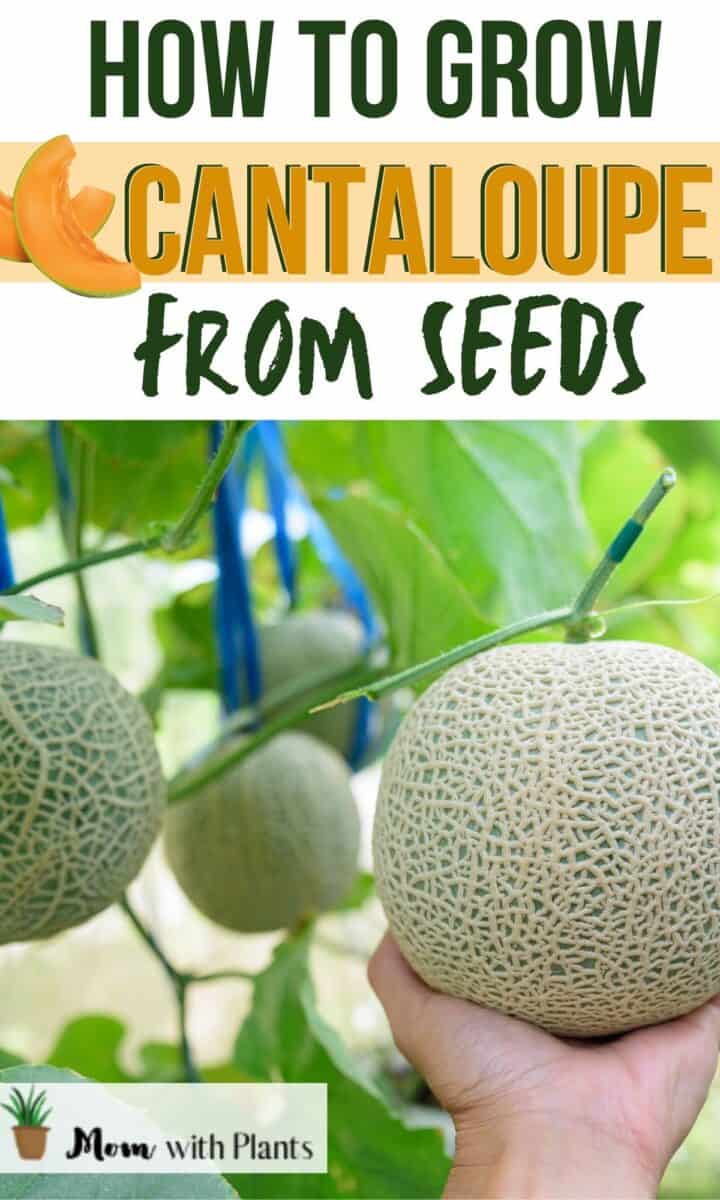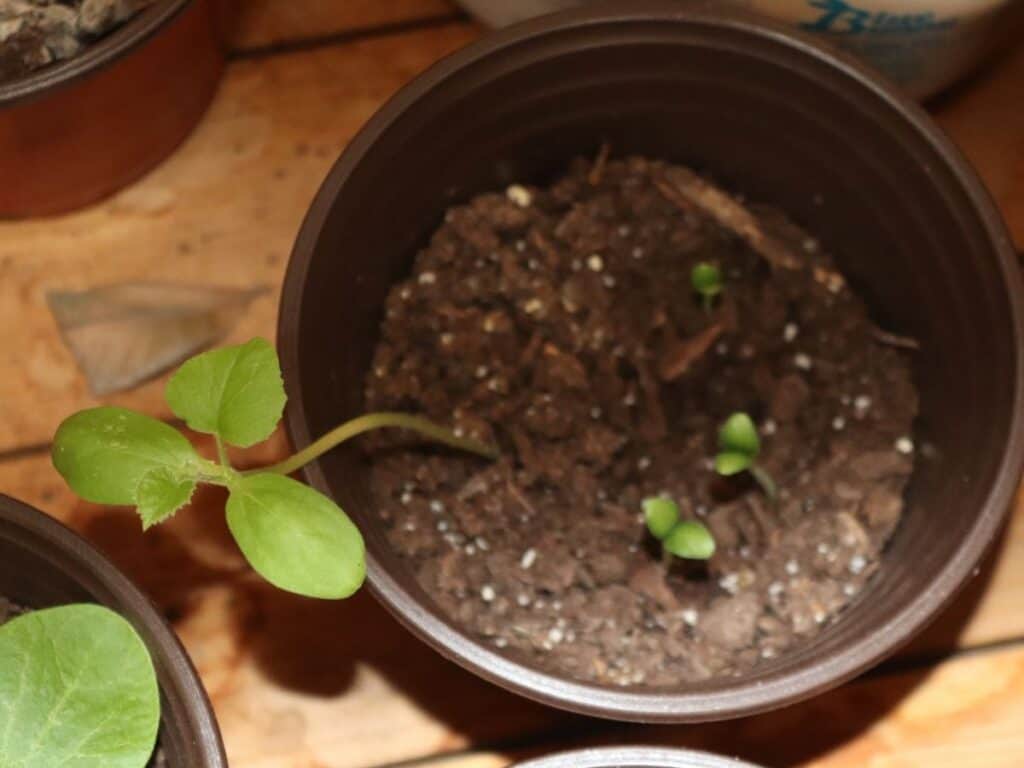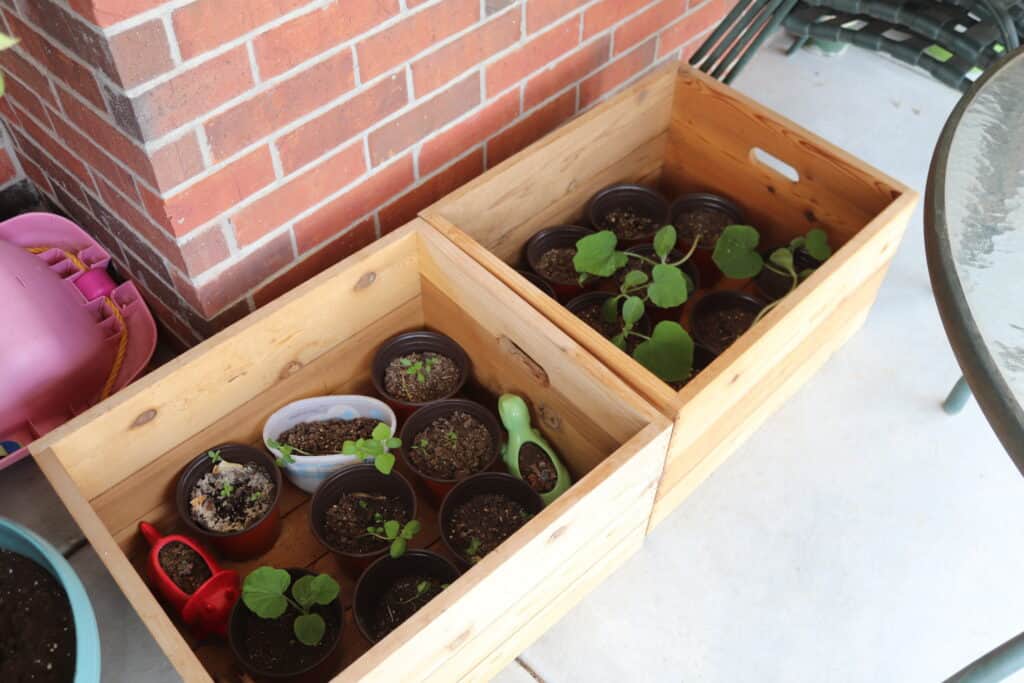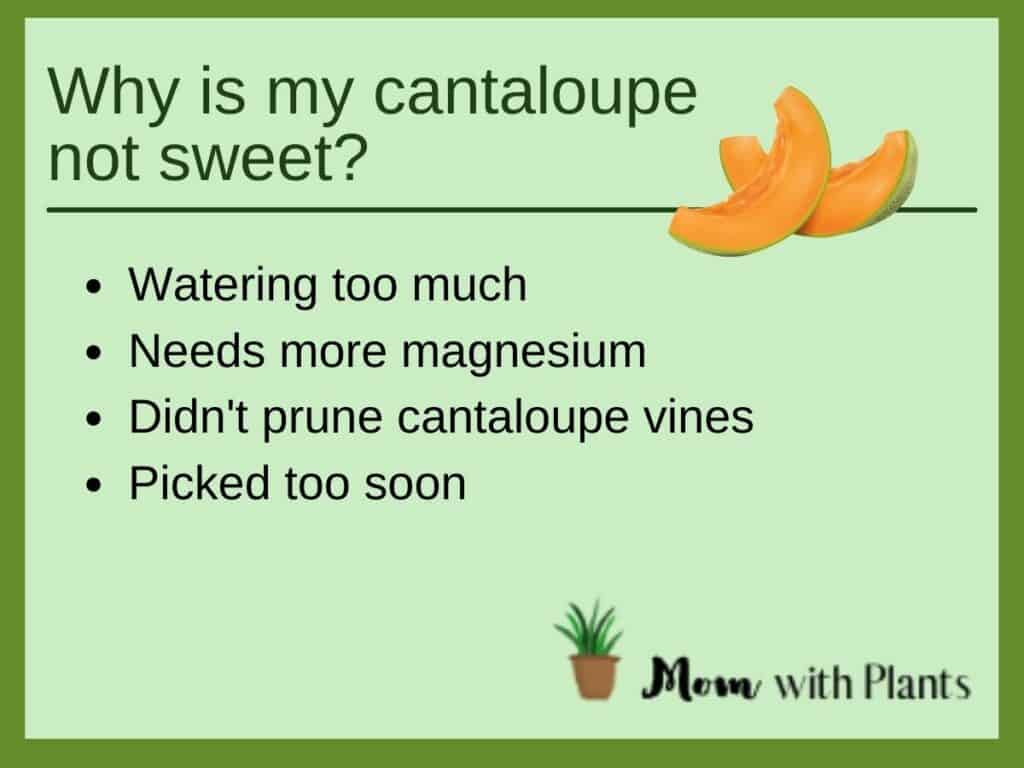Cantaloupe is an easy fruit that can grow really well from seeds. If this is your first time growing cantaloupe, this guide should help you every step of the way.

Jump to:
How to grow cantaloupe from seeds indoors

First you will want to start out by purchasing some good quality cantaloupe seeds.
- Soak the cantaloupe seeds overnight.
- Then place the seeds onto a slightly wet paper towel. It doesn't need to be dripping wet, but still wet enough to keep the seeds from drying out.
- Place this wet paper towel into a ziplock bag. Then wait a few days, checking every day until you see your seeds start to germinate or sprout.
- Once they have sprouted, you can plant these seeds into pots.
- Don't bury the seed too deep. It needs to be about an inch underground.
- Water the soil everyday with a mister until your cantaloupe seedling pops out of the ground. Then you can reduce this to every couple of days or as needed.
When your seedlings are growing indoors, use an oscillating fan near them. This helps strengthen their stems and gets them ready for wind.
How to acclimate cantaloupe plants outside

This is something most beginners rush and then all that work of starting your seeds inside is wasted because your plant dies.
Start by slowly introducing your plants outside, a few hours at a time. Pick a spot that is protected from wind and gets indirect sunlight. I like to use a wooden crate because it lets some wind in but not enough to damage young seedlings.
You can slowly start bringing them out into more sunlight and wind. This is a way to acclimate your plant to the outside environment.
Another way you can speed up this process is to use an oscillating fan near your seedlings while they are growing inside. This will strengthen their stems, and help them prepare for wind outside.
Once your cantaloupe plants have been outside for a couple of days without issues, it's time to plant them in your garden.
How to transfer your cantaloupe plants into your garden

- Select a spot in your garden that gets full sun, and has good draining soil (preferably sandy or loamy).
- Space your plants about 18 inches apart, because they will spread.
- Water your cantaloupe plants in the morning, aiming for about 1-2 inches per week. When your plants start growing fruit, reduce your watering for sweeter melons.
Can you plant cantaloupe seeds directly outside?
Yes, but you will want to plant extra seeds in case some don't germinate, or birds pick them out.
You will want to still plant the seeds about 1 inch below the ground and 18 inches apart.
Most successful gardeners start seeds indoors because they already have control of the plant growing and getting well established before bringing it outdoors.
Alternatively, you could also purchase a well-developed plant from your garden center and plant it directly into your garden.
Why is my cantaloupe not sweet?

Common reasons for why freshly grown cantaloupe isn't sweet is:
- Watering too much. When your plant has melons growing on the vines, you want to reduce your watering. This might seem counterproductive, but it will make your cantaloupe sweeter.
- Needs more magnesium. Another common reason for cantaloupe not being sweet enough is lack of magnesium. Mix up about 1 gallon of water with 2 tablespoons of epsom salt. Then pour or mist this around our cantaloupe plants.
- Didn't prune cantaloupe vines. Cantaloupe have a tendency to spread, but if you prune cantaloupe vines you will have fewer (and better) melons.
- Picked too soon. Cantaloupe won't get any sweeter once they've been picked so make sure not to pick them until they are ripe. Ripe cantaloupe will be yellow, don't pick a green cantaloupe. The skin will also have a raised netting feel to it, smooth cantaloupe is not ready.



Stephanie says
What does it mean to water your plants in morning but aiming for 1-2 inches per week? Do you mean 1-2 if of water per week?
Joanna Stephens says
Hi Stephanie, so you want to water the ground around your cantaloupe plants so that it's moist 1-2 inches deep. They only need to be watered once a week because of this and the best time is the morning. Hope this helps answer your question a little better!